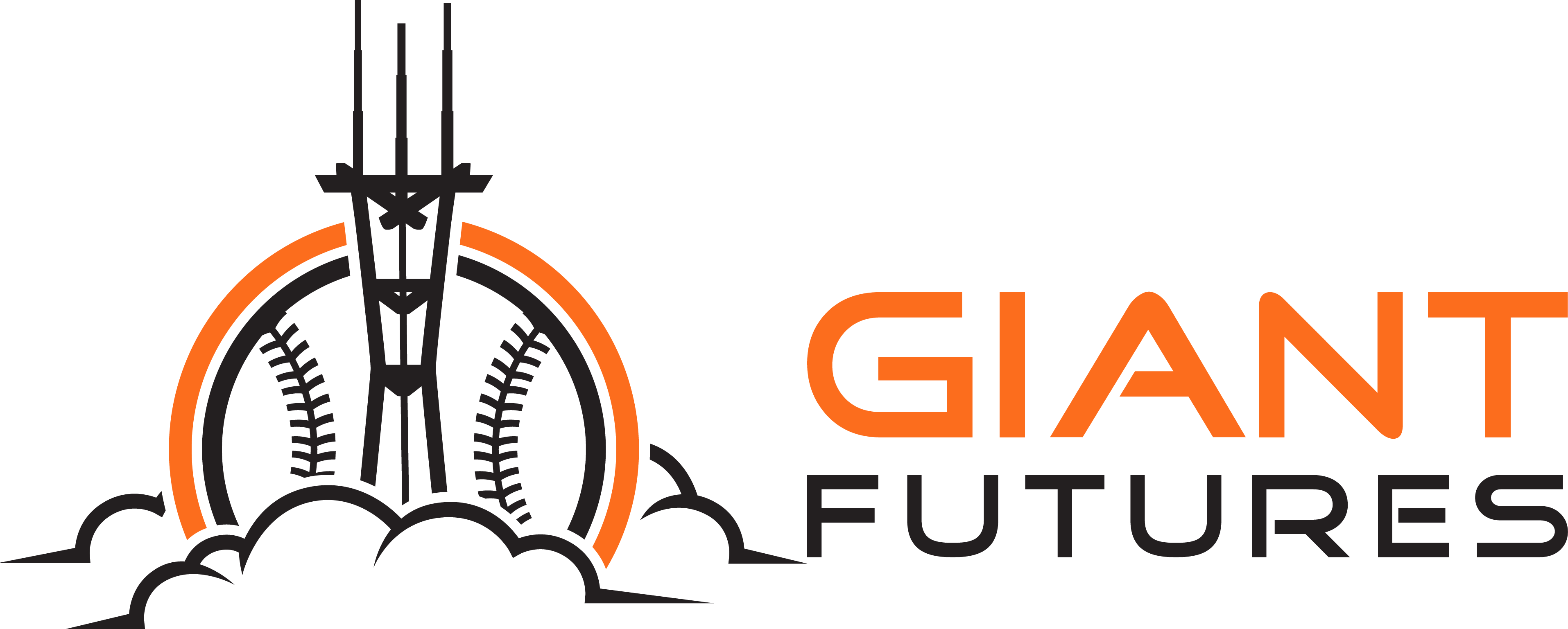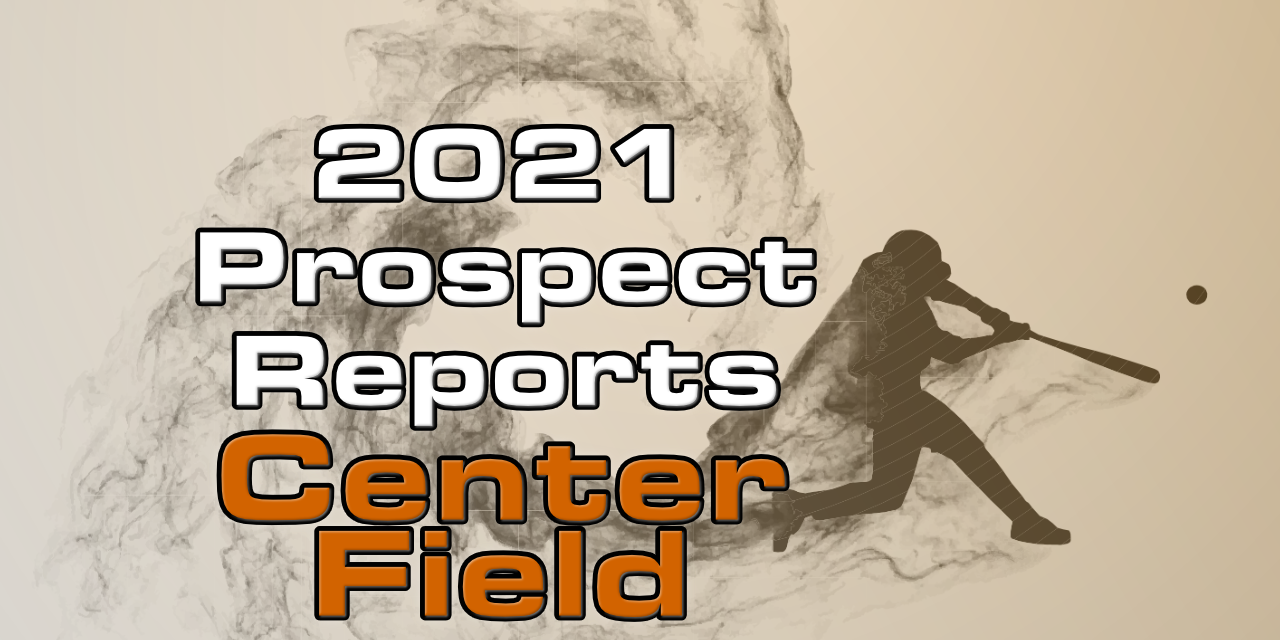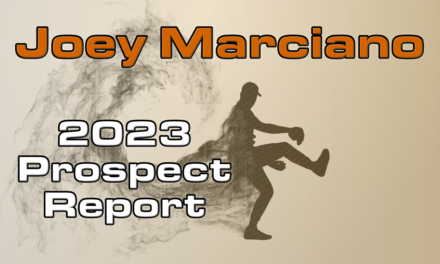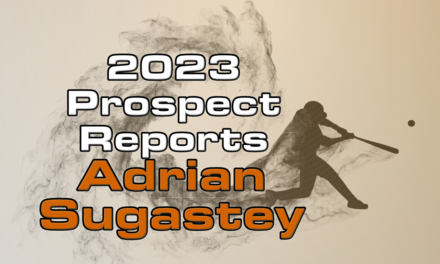No less than five of the most common top ten prospects in Giants rankings played center field as recently as 2019. But how many of them actually will stick there?
Center field is always a tricky position. The players that play it can be as up and down as bullpen pitchers from year to year. And it’s a position best suited for younger players, where as free agents signed to the position can quickly get old enough that they lose a step and can’t play the position as well.
Over the World Series run, the Giants relied on free agency. The 2010 World Series came at the end of Aaron Rowand’s contract, but by that time, his production had severely dropped, and he was replaced by minor league free agent Andres Torres mid-season, who had his own fluctuations. After that, the Giants got Angel Pagan, who had a strong first season, got injured in his second season, and then declined the rest of his contract.
In that time and further back, the Giants have been unable to develop their own center fielder, part of the past troubles to develop outfielders at all. And it’s not like they didn’t try. In 2010, they picked center fielder Gary Brown with their first round pick, number 24 overall. The speedster showed a lot of promise, slashing .336/.407/.519 with 53 steals in 131 games in San Jose in 2011, but as he progressed, he didn’t make the adjustments really needed to make it at higher levels, and was designated for assignment in 2015.
The irony is that center field is a really important position for the Giants. Even with the shortened fences, Oracle Park still has a huge outfield to patrol. And the Giants play in a division with four of the largest outfields in baseball, with Petco Park, Chase Field, and of course Coors Field. It makes a big difference to have a player that can provide range and defense, and be a significant contributor offensively as well.
Back to the system, the Giants have a lot of prospects playing center field, but the majority of them are likely to move over to a corner spot as the progress. But there is one top hitter who looks like he should stick in center field, although even he has some risk to move over as well. But the depth at the position is still very shallow long-term, and the Giants would do well to develop the younger raw players they have there, and continue to pursue natural center fielders to back things up.
#1 – Luis Matos
Click here for the full prospect report
2019 was a breakout season for a couple of players that Giants fans were aware of and expecting big things out of. However, Matos’ year was a little more of a surprise. Matos was a big signee in the same class that brought the Giants Marco Luciano, but his first season in the Dominican Summer League was outright dominating beyond expectations, and prompted an extremely rare midseason promotion out of the DSL and to the Arizona League. The good news continued in 2020, and Baseball America reported that no Giants prospect raised his stock more than Matos in the weird year.
Defensively, Matos shows the best instincts and ability for center field among the top hitters. He has above-average speed, but matches it with natural instincts and reflexes, and also looks like he has the ability and willingness to maintain his body to stay in the right shape to stick out there. His throwing arm is not the strongest, but it should be good enough to be at least average out there.
#2 – Grant McCray
Click here for the full prospect report
McCray gets mentioned more for his father’s highlights than his own, but Grant really hasn’t had the opportunities to prove himself yet thanks to 2020. Still, McCray has already shown off the one plus talent he absolutely has, which is his speed. He is a burner in the outfield, and is a very natural center fielder because of that, which should keep him going. He’ll need to stop leading his league in caught stealings, though…
Of course, McCray falls into a very common stereotype of speedy defensive types: he doesn’t have the strongest bat in the system, with very little power and a tendency to strike out. The good news for McCray’s development is that he already shows pretty good patience when it comes to taking walks (and hopefully using his speed as a weapon on the basepaths), and the hopes are that as he refines his approach, the strikeouts will come down and the walks will continue rising. McCray is no sure thing, but he has a reasonable floor even as a fourth outfielder and pinch runner.
#3 – P.J. Hilson
Click here for the full prospect report
Like McCray, Hilson is an absolute beast as an athlete, with even more range and an even stronger arm, and is likely the best defensive center fielder in the system right now. But Hilson’s downside is that he needs to be better at the plate, and in two pro seasons, while he’s improved, he still has a long ways to go.
Hilson now has two seasons in the Arizona League, and while he showed a lot of improvement in his second season, he still wasn’t above average offensively. When he got on base, he was very efficient as a base-stealer, which is very good news, but he had just a .310 OBP in his second AZL season, so he wasn’t nearly on base enough to take advantage of it. Hilson still has the potential of being a top defender and pinch runner, but he has to keep improving to reach even that.
Other Names To Know
There really aren’t a lot of other center fielders to talk about, since a lot of the corner outfielders are really the ones manning center field. If there were any of the other top outfielders that could stick in center field, it would be Hunter Bishop, whom Baseball America named as the team’s best defensive outfielder, but he also has a relatively weak arm, which could keep him out of both center field, and even right field, where his range would be extra helpful.







Recent Comments